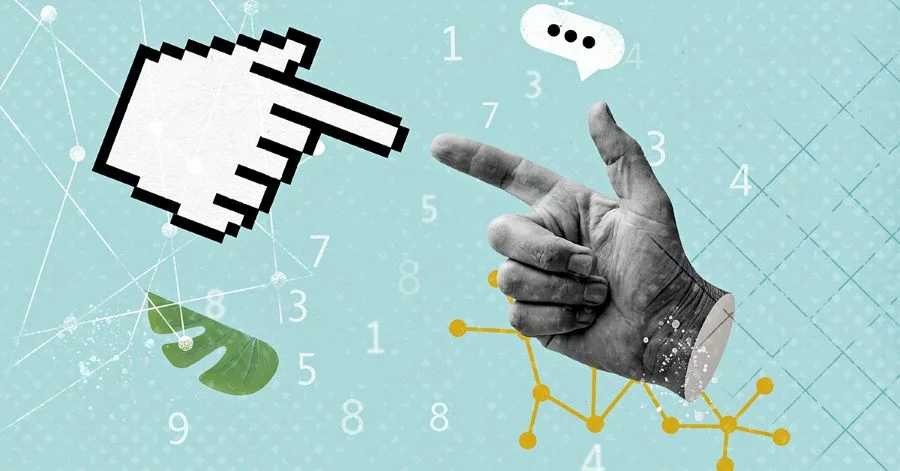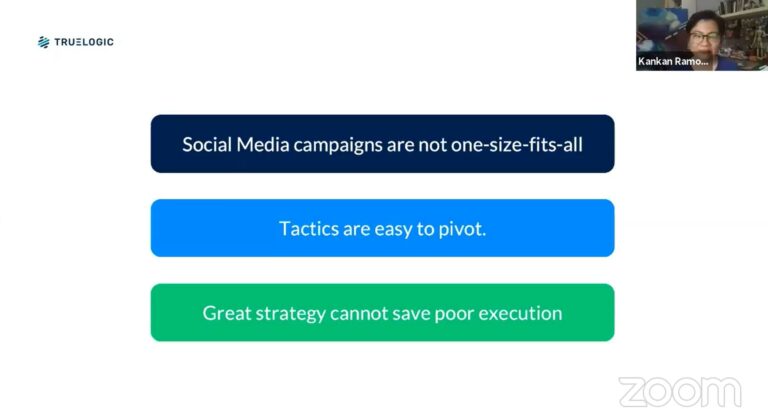Truelogic Episode 64 Recap: How Social Media Algorithm Affects Content Creation

Podcast Transcription
Ant Sierra: Welcome to another episode of the Truelogic DX Podcast. Filling in for Mr. Berns is yours truly, Truelogic’s resident creator, bad boy, and from social media, Ant Sierra. Now, speaking of the platform itself, it’s evolved or diversifying. Social media is a vital tool for businesses to interact with customers, showcase their products and build a brand online for online visibility.
Now, the algorithms that influence the contents that users see on social media platforms are constantly being modified. This could significantly impact the strategy and outcomes of digital marketers. On this episode of the Truelogic DX Podcast, we are going to look at how these social media algorithms updates have affected content creation, and we’ll offer you guys some advice on how to remain on top of your game.
Joining me on this episode are my teammates, my confidant, the people who are my co-debtors whenever I think out a loan, Herr and Jake from Truelogic social media.
What are Social Media Algorithms?
Heriel Reyes: So basically, the algorithm is the system that allows us to see the content that the platform thinks we want to see. So it exists everywhere, not only on Facebook. And it works differently as well per platform. So I think we’ll run through those algorithms to be.
What is the Purpose of an Algorithm?
Jake Macapagal: What comes to mind when I think of algorithm is it thinks for you. Like, I think this guy will like… let’s say, I like a food video or a food photo. I’ll keep serving him pictures or videos and it dominates your feed.
Heriel Reyes: Algorithm is also responsible for example you are talking with a friend about a certain topic, then the next time you scroll on Facebook, it suddenly appears. It’s not magic, it’s an algorithm. And the reason why it happens, we think Facebook is listening.
Why do Social Media Platforms Change Their Algorithms?
- Improve the overall user experience
Jake Macapagal: I think it’s to improve the overall user experience because we change how we interact or engage with content regularly. So it would make sense for… if you want your platform to be relevant, you have to change alongside the people you serve content to.
Heriel Reyes: Especially when it’s based on interests. So of course your interests change over time. It does tend to dominate, especially your interests. But to some degree, I think as I user, I don’t know the responsibility somehow on how to curate my own social media feed.
- Combat spam and misleading content
Jake Macapagal: I think the algorithm in a way, it’s a shield against spammy content. I’m not sure if that’s what you’re getting at, but what I am getting at is it kind of prevents you from seeing irrelevant stuff like, for example, lato lato.
Most of the stuff I share is about gaming, gadgets, cats, or cute animals. So the percentage I will see lato-lato out of ten, I’d say, is two out of ten because my friends share that kind of stuff. And eventually, you’re going to see some things like that, pero just a tiny percent lang. It’s not what you’ll see dominantly in your feed.
How do Social Media Algorithms work?
Ant Sierra: Now that we’re talking about the relationship, we’re talking about ads, can you explain to us how algorithms for specific platforms work? It’s not a one size fits all. Different platforms are, consumed in different ways by different people.
Facebook’s news feed algorithm

Heriel Reyes: Everyone and their mothers are on Facebook. So the content you get is from different people. But most of them will be from your friends, the ones that they shared. This used to be the algorithm of Facebook.
But as we all know last 2018, I think everyone was familiar with Cambridge Analytica. So when that scandal happened, Facebook used the data to influence political results. So the algorithm of Facebook changed. What Facebook did is devalue page posts so most of the posts that you will see will be coming from people you know. So the chance of seeing page posts declined unless you chose that option. So that’s one. Another is when it comes to the type of content. So right now short form videos are in.
Facebook is now pushing you to do reels if you want to get a lot of impressions. So those are the things that influence Facebook’s algorithm. And the last one is engagement level. The more that people engage with your posts, the more they will be visible to other people. The same applies to business pages, your page cannot just keep churning out content. You have to make meaningful content, that’s engaging because it will help the algorithm.
Ant Sierra: It’s not like the early days of Facebook when you have to produce one content a day. This brings us to content quality.
Twitter’s timeline algorithm
Heriel Reyes: On Twitter, since it’s mainly a text-based platform, it prioritizes tweets that garner discussion. The more replies and retweets, the more chances of appearing on the timeline.
Jake Macapagal: Well I have some useful input there. Regarding subtweet, if you are the only one engaging on your subtweet, it’s not gonna matter much. But if people chime into everything you say, I think that’s when your tweet will explode.
Ant Sierra: So it’s, the same with how Facebook works now, it’s still the quality of the content. Because for this one, it’s more of the quality of the conversation.
Instagram feed algorithm
Jake Macapagal: Well, the stories that you see on Instagram, they will almost, or if not exclusively, almost always be from the people you follow and people you… for example, you heart-reacted to this person’s picture or you laughed for some reason. You’re gonna see more of his or her story as well as your interest. Your interest will shape the content that you see, the pictures, the reels, and the videos, it will shape what you see on Instagram.
TikTok algorithm
Jake Macapagal: Disclaimer, I never and will never does any TikTok trend. I swear. But if there’s one word that I will use to describe the entirety of TikTok, organic. TikTok highly values organic content. I’m not sure how the algorithm did this, but the moment the content is branded like they see so many logos or so many posts prod, they devalue even if you pay for stuff.
Because that’s… I think interest takes a key part here. People like seeing organic stuff like, he can do this, so maybe I can do it. So in a way, it’s like, it kind of multiplied na, I want to do what he can do. I want to do what he can do.
Ant Sierra: So the platform itself prioritizes both authenticity and relatability at the same time. The question now is, does follower count matter when it comes to TikTok?
Jake Macapagal: It’s TikTok saying, I don’t care who you are. You nailed this one. You’re going to have your five seconds of fame.
Impact of Social Media Algorithm Changes on Content Creation

- Visibility and Reach
It’s hard speaking from a business’s perspective. Like we said earlier, if you post every day, you are just wasting your time. It’s like high effort, low impact. So we don’t recommend going fully organic because it is devalued inherently by the algorithm.
- Content Relevance
When something’s happening, timing is the key for content creators. You have to keep in mind if this is the right moment to post about this.
Jake Macapagal: I’d like to add something to that. You also have to translate the content that you want to create as well as the algorithm. So you can’t have one-size-fits-all content. So what might be a hit on Facebook wouldn’t be the same for Twitter. So you have to translate.
- Quality and Originality
Jake Macapagal: It doesn’t matter much if you’re the first one to do it. Just do it better than the original. And basically, quality and execution mo/
- Discoverability and Niche Targeting
Jake Macapagal: For example, Father’s Day. But your niche is, for example, J-Rock. Chances are, unless the brands that you follow have Father’s Day content, you’re not going to see much of Father’s Day. That’s how it goes.
Tips for Adapting to Algorithm Changes and Maximizing Content Visibility
- Figure out your publishing frequency
I think it depends on the frequency of your post. Again, you don’t have to post every day, it’s all about timing. Then the targeting, it should be optimized as well.
- Use paid advertising
We do need to do ads in this day and age especially when it comes to Meta properties, because on Facebook and Instagram, the easiest way to get noticed is to sponsor your post.
- Invest in creativity
You can post anything you want but if it doesn’t catch your audience, it wouldn’t even matter at all.
So thank you, Herr and Jake, for joining this episode technically, so everyone who listened to this episode of the Truelogic DX podcast, thank you. And don’t forget to subscribe to Truelogic DX Podcast powered by Podmachine. If you wish to listen more, to learn more about digital marketing, please check out www.truelogic.com.ph and subscribe to our Spotify, Google, and Apple accounts. We’re on Facebook, LinkedIn, and YouTube. So see you guys on the next episode. This has been Ant.










